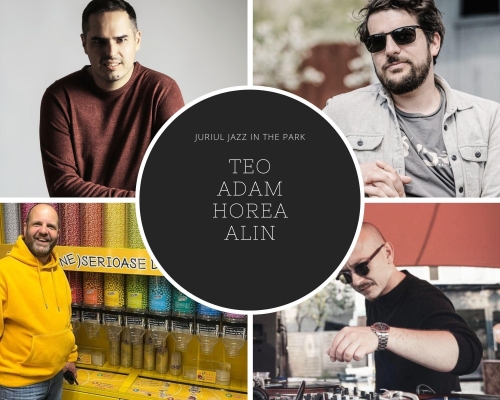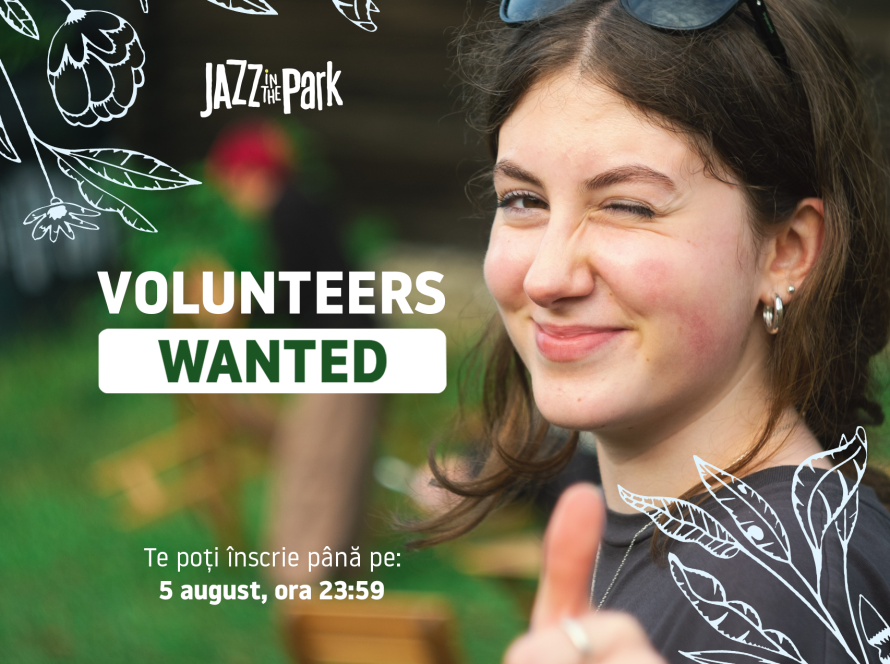7-10 minute read
Hi! Alin here, the founder of Jazz in the Park. If you’ve been following us, you probably recognize me. I think I’ve played every possible role in this festival, and now I’m serving as a judge for the band preselection. I thought I’d tell you a little bit about how the process went so you know what to expect when you come to the event.
First of all, you should know that the jury for the competition in the park will be a bit different. However, it was important to do the preselection internally. First and foremost, it will be an outdoor competition in a large space. Not every band is suitable for that. There are jazz artists who fit better in closed spaces, who need silence and a special ambiance, and it would be difficult for them to perform in the park. And then, we didn’t necessarily want only the best bands. We chose both elitist and hunted for potential, or we heard some sounds that we felt needed to be encouraged.
And to make the selection, we had (drum sound): Horea Marc, stage manager at JIP 2013-present, event producer, former member of the Sensor band, Teodor Pop, the pianist from Jazzybit and a close friend of the festival, and Adam Dobie, a musician, promoter, and the most knowledgeable person we know when it comes to undiscovered musical diamonds. Dodi (Denisa Dan), the new festival manager, was also there to oversee us.

We received 212 applications from Europe, North America, South America, and Asia. We took a week to listen to them, score them, and then a day to discuss and negotiate. We kept it simple, giving 2 scores: one for the quality of the music and one for how well it fits in the park.
(P): During the discussion, we drank Birra Moretti beer and prosecco provided by Crush Distribution. Both were consumed responsibly.
I really enjoyed the process, I had fun, and it was calming to talk about music with people who know their stuff. I was also impressed by the level of the bands in the competition. We have bands signed to bigger agencies, artists who are clearly preparing for the international market. I felt that the quality of the event increased the moment I saw the level of the applicant bands.
And I decided to create a piece with my fellow judges. I asked them some questions, and each of them answered individually, not knowing that I would mix and interpret their responses. Here it goes:
I started by asking them how they found the level of the applicant bands:
Horea: By far the most difficult competition selection in JiP’s history. Too many good bands, some suitable for festivals. It was a tough selection to make, and I’m pretty sure that some bands were disadvantaged by the quality of the recordings or the songs they chose for the selection. It was a great pleasure to listen to high-quality music from such young bands! Also, as a competition, I think it’s great that around 5% of the applicants were Romanian bands, while the rest applied from who knows where in the world. Me happy!
Teo: I was genuinely happy to see an impressive number of bands that entered the competition, many of them showing a high level of performance, composition, or even style. Every year, the Jazz in the Park competition naturally grows, and the level of the participants keeps getting higher.
Adam: It was a year with many bands that could already perform at major festivals in the country and abroad.
It seems like they also believe that the participating bands are good. The mission was not only to properly screen the bands but also to consider the competition from the audience’s perspective and ensure a festival atmosphere.
Adam: In my opinion, people will have a great time, as many of the finalists are bands that put on a show and can get the audience dancing.
Teo: I am convinced that the audience will be thrilled both by the high level of the participating bands and by the stylistic diversity. We hope to have a large audience!
Horea: Realistically, I don’t expect the names to matter much to the public. I think very few of those who come to the park over the three days will search for the bands beforehand. But I’m quite confident that many in the audience will be pleasantly surprised by what they hear.
We have confidence in the lineup. What would be really cool is if Horea turns out to be wrong about the public. But that’s another topic. I can’t wait for the day when people will enjoy music and art, just like they enjoy any other new thing in their lives. You have 17 bands that you haven’t heard of before coming to your city! It should be amazing!
Coming back… of course, I was curious about their favorites. In response to that question, Teo and Horea felt more formal and gave politically correct answers about objectivity and equal opportunity, which I won’t include in the interview. But Adam took the bait and said plainly:
Adam: Yes, I liked the Belgian bands that registered this year: KAU trio and Kristo.
True, among the four of us, only Teo and Horea will be on the final jury. I (Alin) won’t name favorites either, but I noticed a strong influence of the countries where the applicants come from in their music. And it’s great that they know how to incorporate that into their compositions! I’m a big fan (musically) of bands from Israel, Poland, and Korea.
I then asked my jury colleagues how they found the selection process. It’s true that we have a great responsibility towards the artists and the audience. And as much as we are friends and like to joke around, we also want to be professionals. Personally, I really enjoyed it. It was the most civilized jury I’ve been a part of in recent years. It was a collaborative process that was both fun and beneficial, and I’m happy with the experience. But here’s what they said:
Teo: First and foremost, we wanted to create a lineup that was stylistically diverse, but it was also a priority to encourage young promising bands. The interaction between us was very good, and we quickly managed to choose the final list of bands. I think a big advantage was everyone’s openness to each other’s preferences on the jury, as well as the common strategy in relation to what Jazz in the Park aims to represent.
Horea: Smooth and pleasant. Although we come from relatively different spheres of activity, I never felt for a second that the four of us had radically different opinions when rating the entries for selection.
Adam: I felt that we reached a common ground with many of the bands that entered the competition. Being from different generations, there were artists that some of us liked more, with more modern elements, and others liked the artists who played more “classic” jazz.
It’s true that jazz music has changed a lot in recent years, and the audience has changed with it. We are happy that the audience has grown and jazz has become more normalized. We find more and more jazz in everyday playlists, the media has a bit more interest in music, things are growing. Maybe not as fast as we would like, but we are confident.
Teo about the audience: I feel that we are on an upward trend, both in terms of the number of events and the number of young bands emerging (I recommend you follow those in the competition), and consequently, the audience. I don’t think there is a clearly defined pattern for a jazz listener because the diversity and freedom that jazz brings today can be enjoyed by a very diverse audience in terms of musical preferences, musical culture, and even age of participants.
However, Adam doesn’t think jazz is doing so well. I think he has a point. Not to mention the fact that he described me as the listener profile: In our country, jazz is very rarely found in playlists or among the records bought by listeners. That’s why it’s important to keep as many active festivals as possible to spread this genre to as many people as possible. I think a jazz listener wears glasses, some have abstract tattoos, and they are wine drinkers.
Horea sees progress and globalization on the horizon: First of all, before the ’90s, we didn’t really know what jazz was, how vast the jazz palette was. We only had access to fragments of jazz (and those carefully selected by the system). You needed a certain musical culture, and I think jazz was positioned for the majority on the same (perhaps boring, elitist) line as classical music. Now everything is much simpler for the listener… first of all, a simple search on Google and Wikipedia gives you an extremely generous definition of jazz, then it presents you with a huge dome under which many musical styles that can be integrated into the generous category of “jazz” fall. It is extremely likely that at least one of these styles will resonate with each of us, and suddenly you consider yourself a jazz lover, even if you have 20 other styles that you don’t like.
That’s about the selection process and what’s on our minds right now. My fellow jury members are nice people, I’ve known them for a long time, and I admire each of them for something specific. It was a pleasure to go through this process together. As a conclusion, I asked them a personal question to get them to open up a bit.
Teo is a pianist and IT specialist and is part of the band Jazzybit. They appeared around the same time as Jazz in the Park, in Timișoara. We met in 2014, and since then, I think we’ve done dozens of concerts together. I found it amusing that the only thing he hasn’t done at Jazz in the Park is to have a role that doesn’t involve playing.
I’m delighted to see how Jazz in the Park and JazzyBIT have grown together in the last 10-11 years. We have a special relationship with everything that Jazz in the Park represents because we have similar directions and strategies. We equally want to share music with as many people as possible, grow the jazz-loving audience, and develop a united community that helps young bands in particular. I’m honored to be a member of the Jazz in the Park Competition jury, but most importantly, I have the opportunity to discover and interact with valuable young bands that I might not have had the chance to know otherwise,” says Teo. You can listen to him at the festival in September.
If you ask people from Cluj about local bands in the city, I think you’ll get 9 out of 10 recommendations to talk to Adam. This guy knows everything that’s happening. And I find it fascinating how much he cares. I’ve known him since he worked at a local printing house, and every conversation with him was about music. And I’m glad to see him booking acts for our friends at EC, or at the Sports Festival, TIFF, or with us. So I asked him to compare how we are compared to other festivals.
I really like the bands that have entered the competition this year. We even have a band that performed at EC and entered the competition. I’ve noticed that there are more and more young jazz bands combining electronic music, which should be taken into account for other events, and it’s appreciated that many of these bands want to come back to Romania for more shows after performing at Jazz in the Park.
What’s worrying is that there are fewer Romanian bands that are on the same level as bands from abroad. That’s also because in Romania, there is less support for young bands, and there are fewer venues where they could have concerts and be seen, to “cut their teeth.”
I saved Horea for last. He was my mentor in my first apprenticeship in advertising, and it’s probably the longest professional relationship I have. Jazz in the Park owes its existence to him, and I’m glad that we’re growing old together, side by side. At the festival, he is the stage manager and has managed the sound for over 300 bands, just from us. So I asked him to give his opinion on the competition lineup, compared to what he has seen before. I managed to get the longest testimonial from him.
Since the first edition, Jazz in the Park has always had at least two names in the lineup that made you want to leave the house. In some years, “we went overboard,” and there were more than two names 😊 Except for the aforementioned headliners, the bands coming to the competition this year can easily be considered very good content for the festival. We’ll see if their live performance matches their recordings, but my feeling is that we’ll have a few bands in the competition whose names will be found on the posters of specialized festivals in a few years.
If music has changed in recent years… well, human beings are constantly changing. We ourselves are not the same as we were 11 years ago; we no longer have the same values or musical tastes. Artists are no exception. You see, I haven’t listened to Waldeck for a few years, but I’m quite convinced that the Waldeck from Jazz in the Park’s first edition is different from the Waldeck of 2023. Most likely, their style is the same, but their performance is probably different. True artists will always seek something new; they will try to evolve along with the trends around them. So the answer is simple: music changes from day to day. It’s normal for it to be this way, and we should be happy that we can perceive these changes almost in real-time with the help of technology and online media that everyone is anchored to.
Thank you for your patience in going through the material!
And don’t forget: June 30 – July 2, Jazz in the Park Competition, live from our beloved Central Park!”





